The place setting is very useful for large banquets and gatherings. It helps direct guests to the exact spot or table that is allocated for them, thereby helping in the organization and avoiding chaos at the onset of any event or reception. Templates can be used for any event or special occasion to help keep guests organized and maintain order throughout an event/occasion.
Although it is not usually a hard task, it can be challenging depending on the level of formality of the occasion or the event. Knowing what to do, how to organize and distribute the tables is very important in ensuring a smooth running of the event and in making sure that all guests feel happy and welcomed at the same time.
In this guide, we will be taking you through the basic rules of tabling, how to do it for guests, the different seating arrangements, and provide you with different templates to help you with any event or occasion.
Free Templates
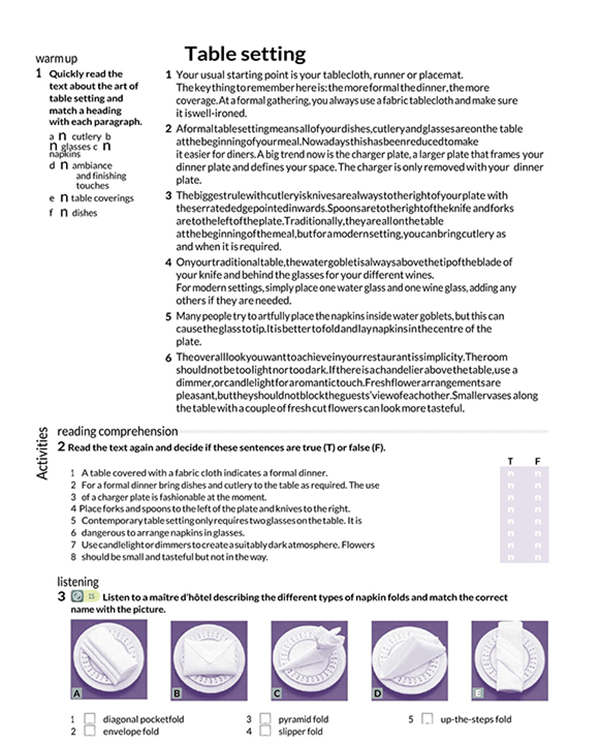
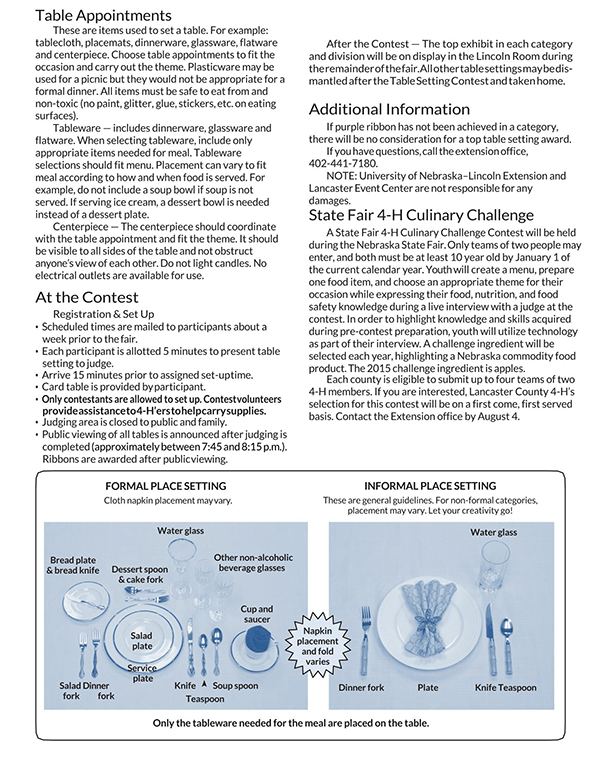
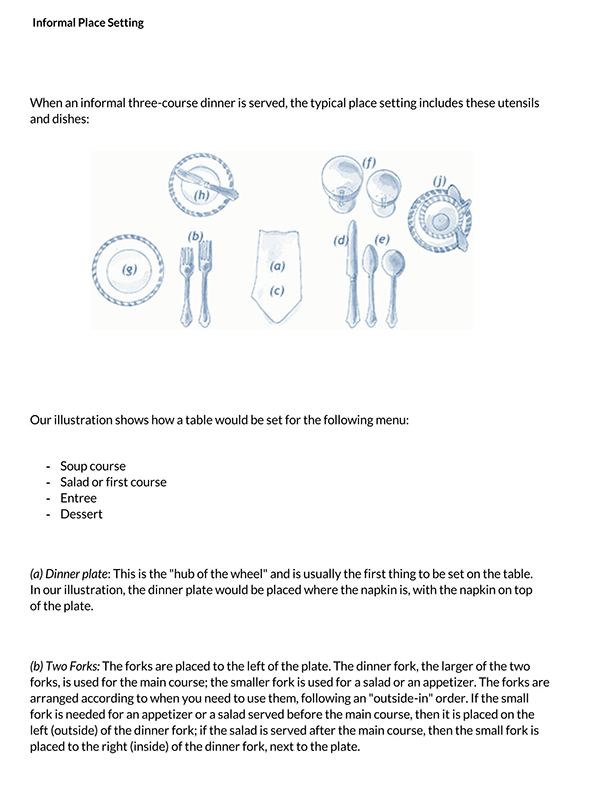
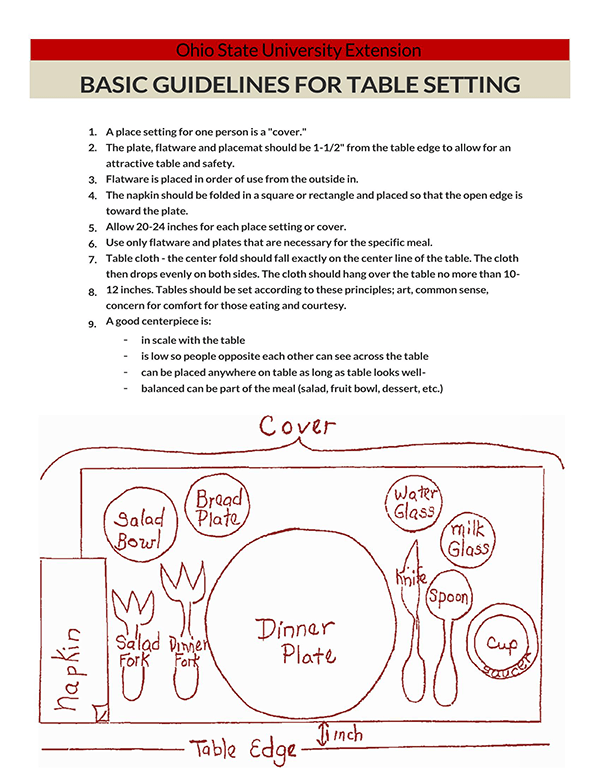
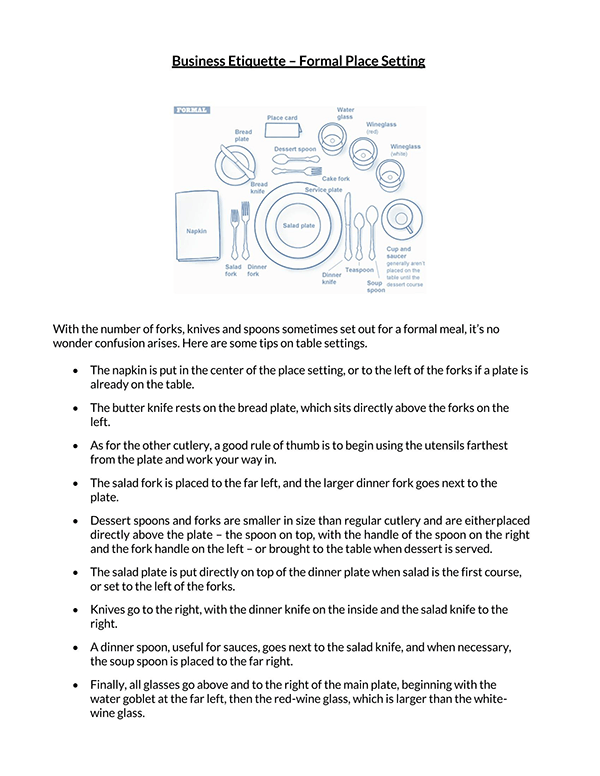
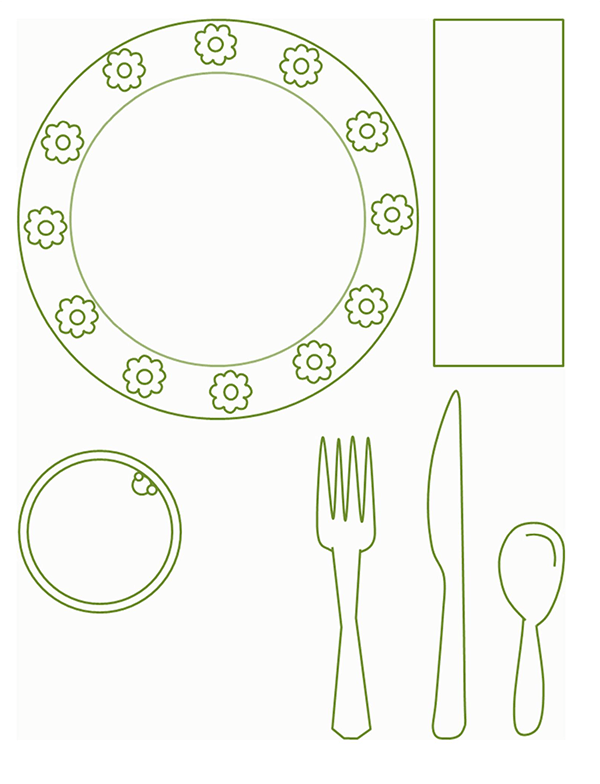
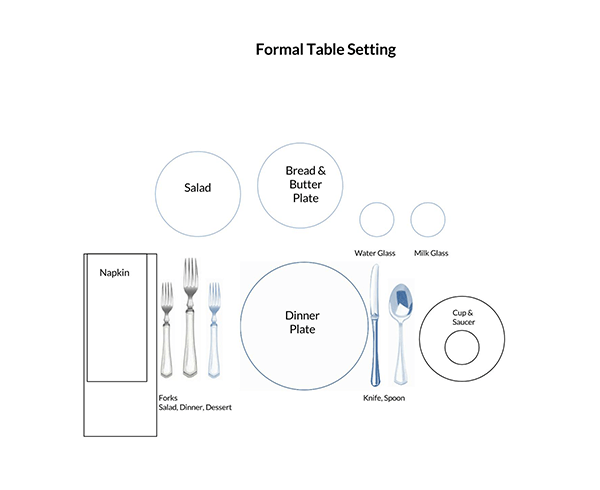
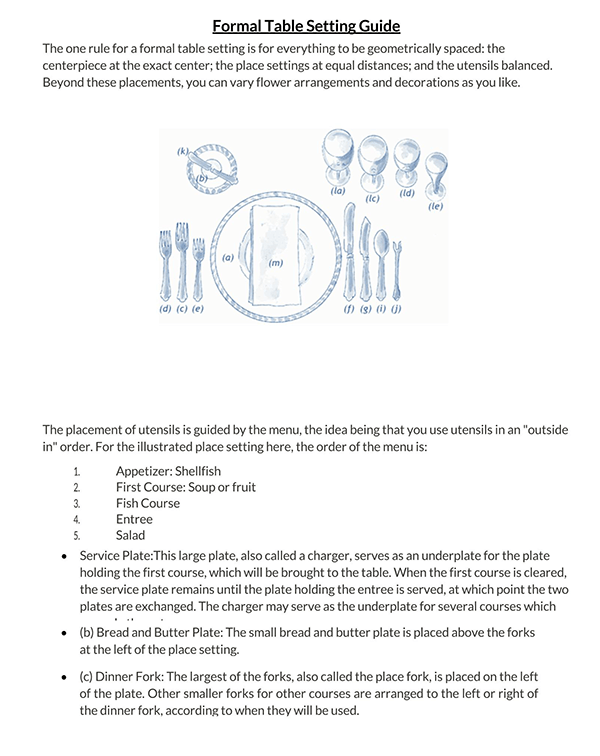
Basic Rules of Table Setting
There are basic rules that you must first understand before setting the table regardless of the event or occasion. These rules are important as they will help ensure that the tables are set right and that no important item is missing on the table.
These basic rules are:
- All Utensils should be placed in the order of use and placed from the outside in.
- With only a few exceptions, all knives and spoons should be placed on the right-hand side of the plate and all forks placed on the left side except the oyster fork.
- All drinking glasses should be placed on the top right
- All napkins should be included at each one
- A rule of thumb for silverware placement is that all utensils should be placed in the order of use, i.e., from the outside in. For instance, a salad fork is usually used before the dinner fork; hence it should be placed on the outside. Consequently, all spoons and knives should be placed on the right and forks on the left.
- Only glassware that is to be used during the meal should be included at the table. If there are no beverages to be served, do not include glasses at the table
tip
When setting the table, it is important to include all the utensils that will be needed for each meal. For instance, if you will be serving soup at the table, make sure to include a soup spoon and if you are serving cake, make sure to include a cake cutter or a knife and napkins at the table.
How to Do it for Guests
To do placing for guests and ensure that everything is placed accordingly, there are several things that you must first fulfill, including:
Creating a tablespace
Creating a tablespace is the first step to ensuring your guests have enough space to enjoy their meal, occasion, or event. By placing fresh flowers and scented candles on each table, you will be one step closer to making their experience magical. If you are organizing a table for a more formal event, consider placing larger florals and for less formal events, consider using smaller arrangements.
Plates and utensils
Regardless of the occasion, plates and utensils are usually guaranteed to catch the eyes of the guests. Use plates and silverware that go with the theme of the table. You can mix different colors as you see fit, but make sure they are visually appealing and match the theme of the event.
Menu cards are important as they help your guests select what they would like to be served. They are particularly important for guests who have food allergies or are on a diet. By going through the menu and selecting what they would like to be served, you will be able to engage your audience and find out what works for them and what you should incorporate in your next event.
Before your guests arrive
Before your guests arrive for the event, it is important to ensure that everything is well placed and easy to access. For instance, you should consider setting up the music, drinks, appetizers, and other snacks in a room adjacent to your kitchen to be able to access them easily to ensure the whole process runs smoothly. This will also give you enough space to navigate and help avoid confusion which may lead to panic and chaos during the event.
Printable Templates
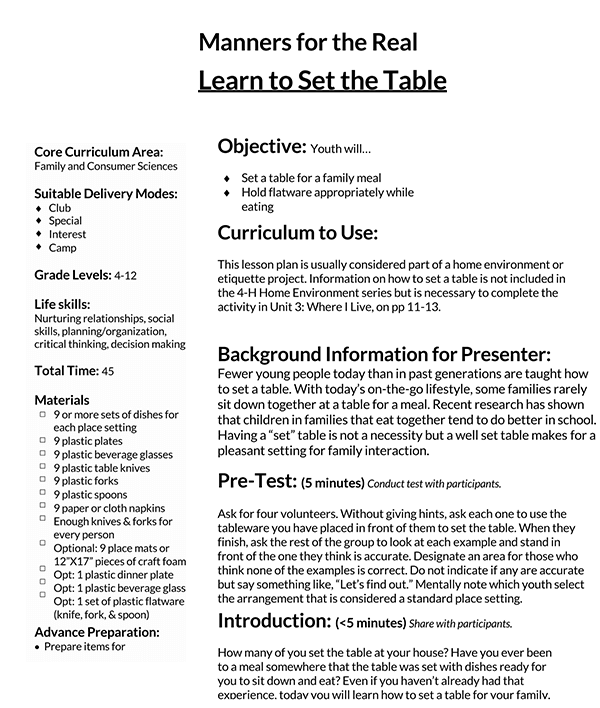
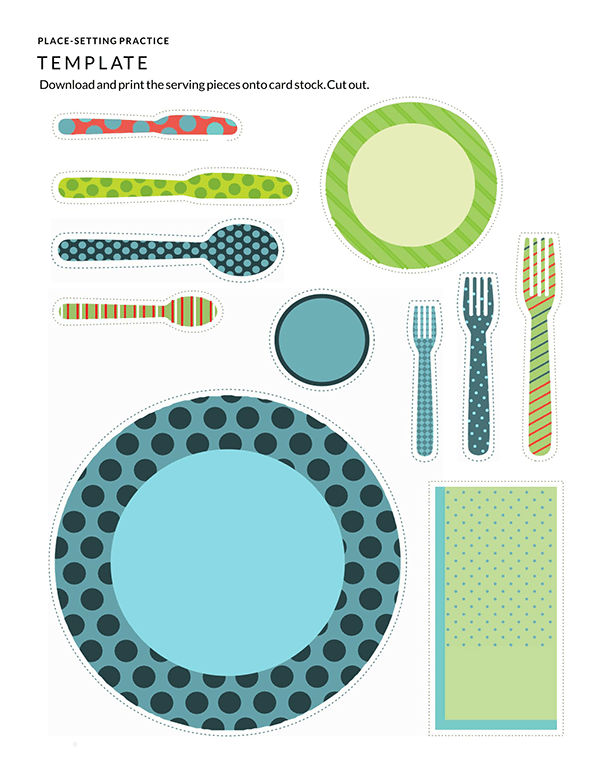
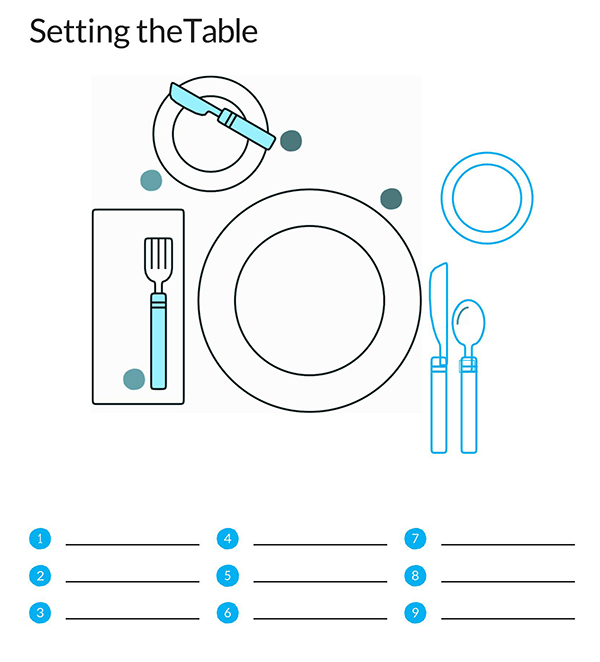
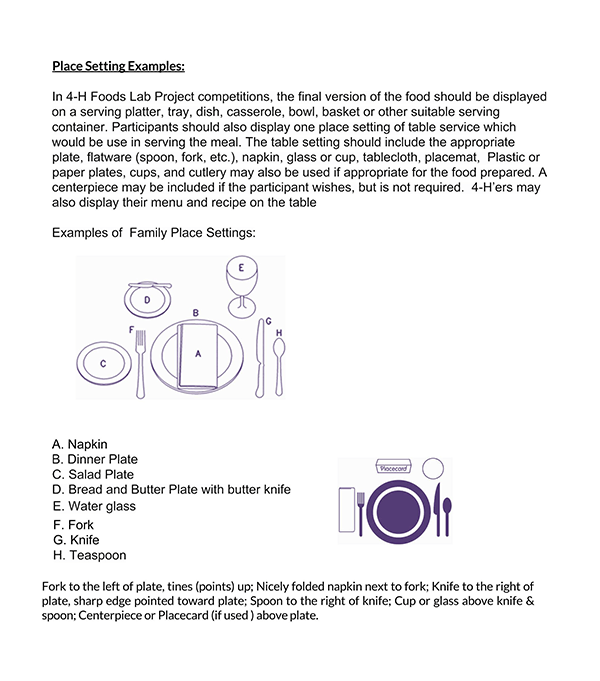
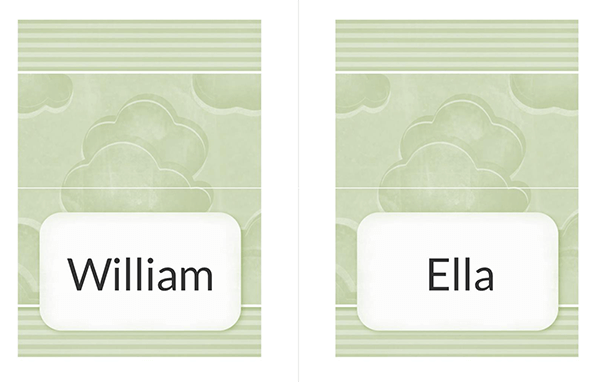
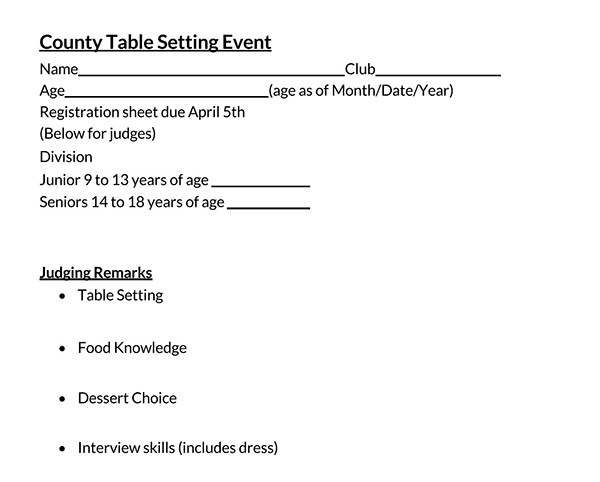
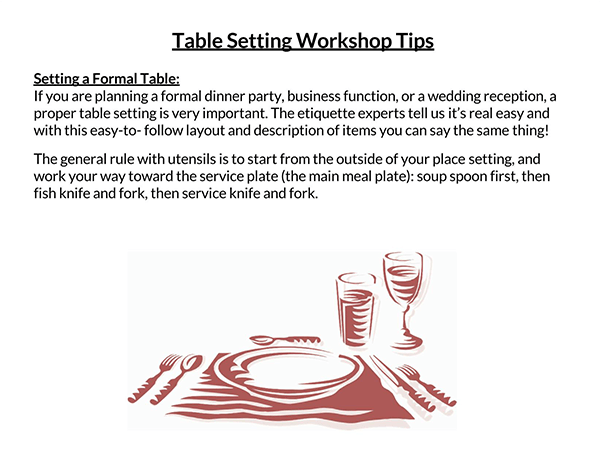
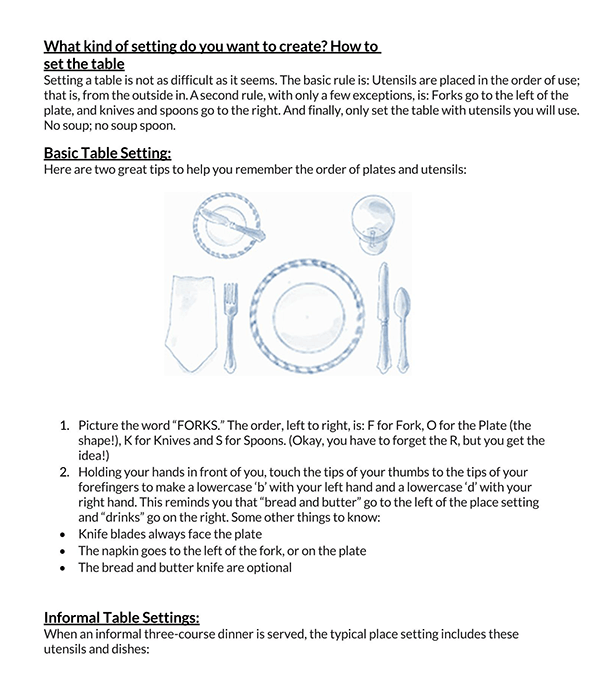
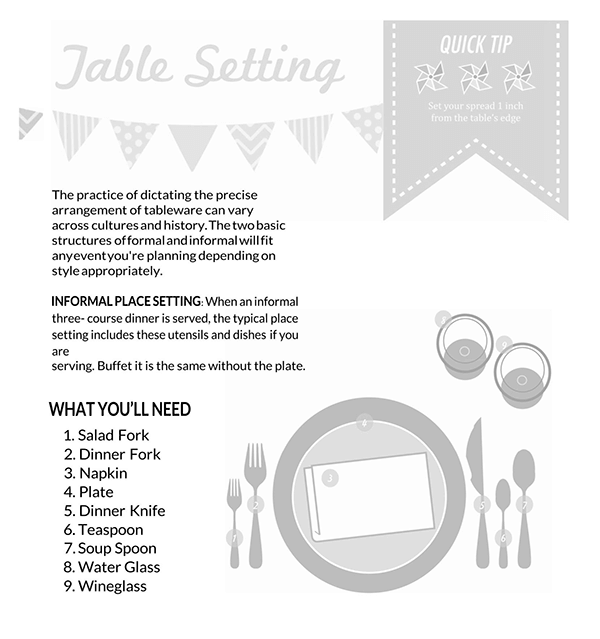
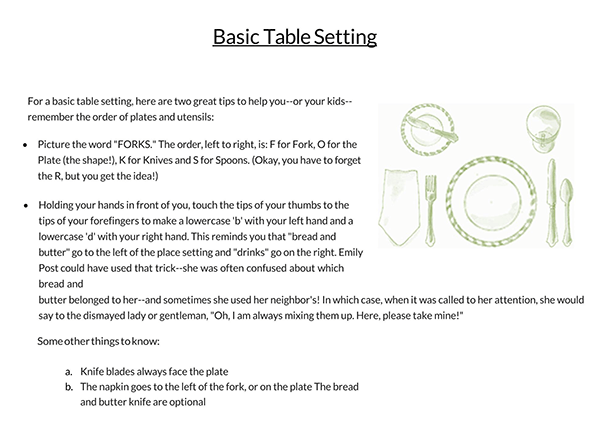
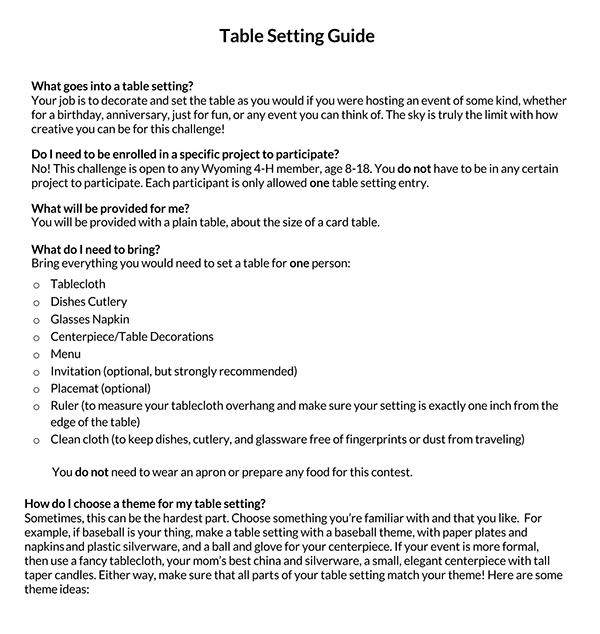
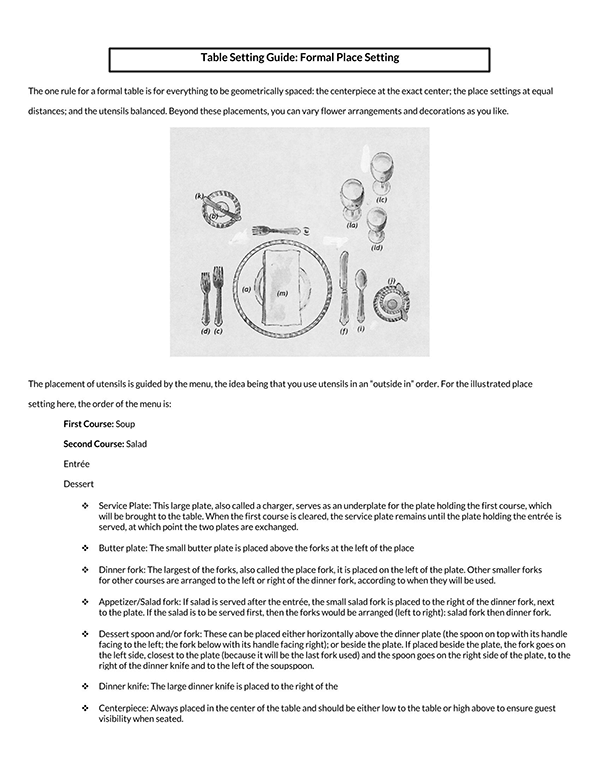
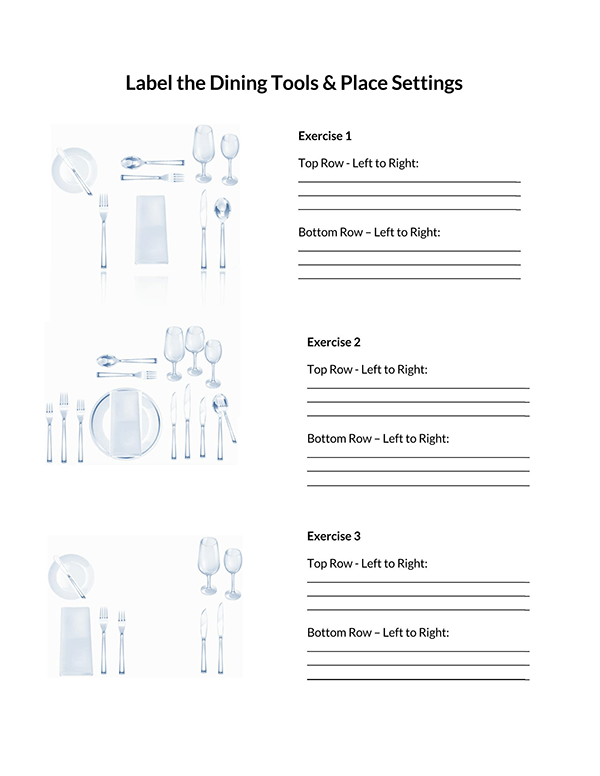
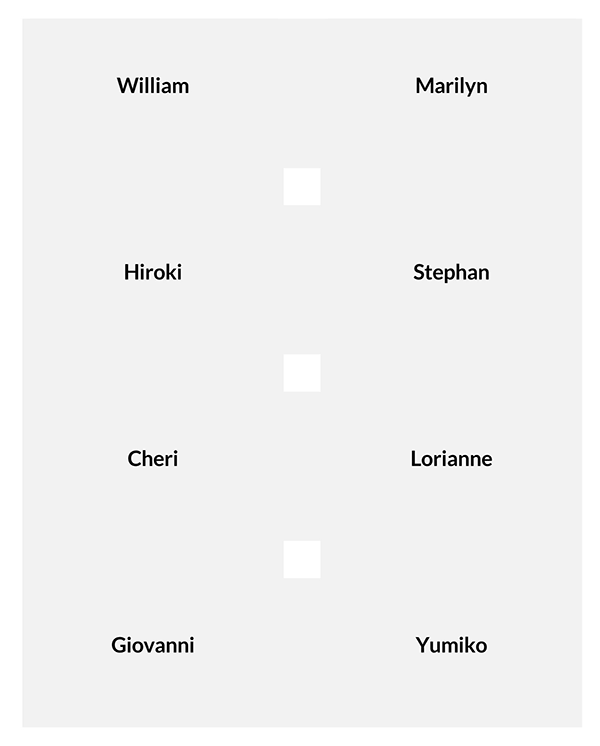
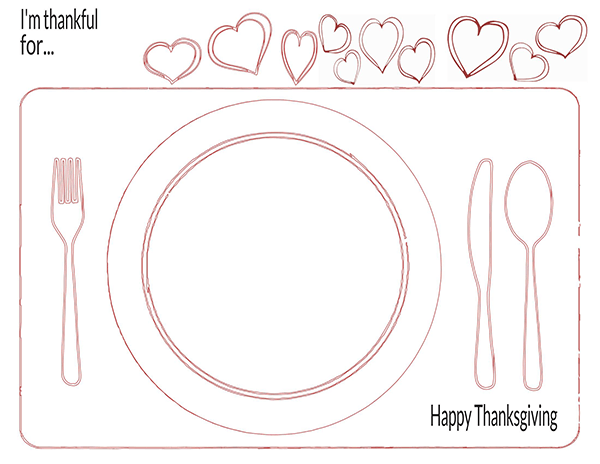
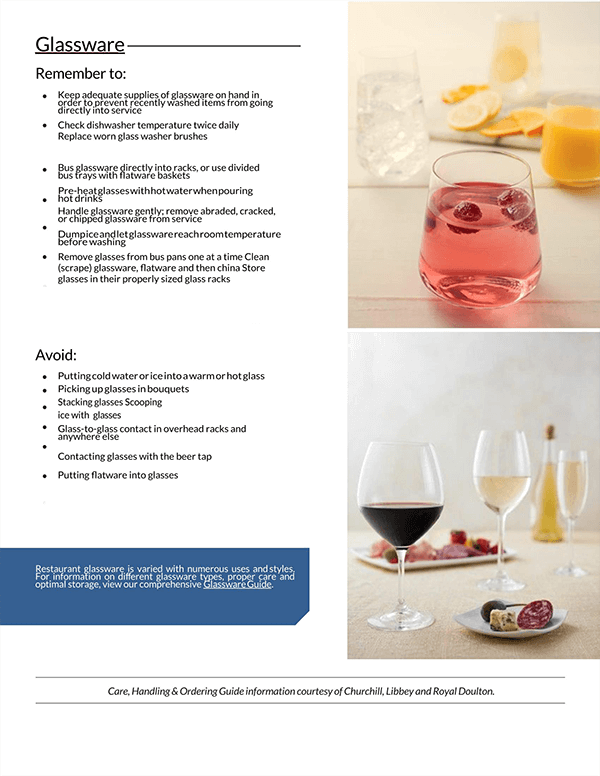
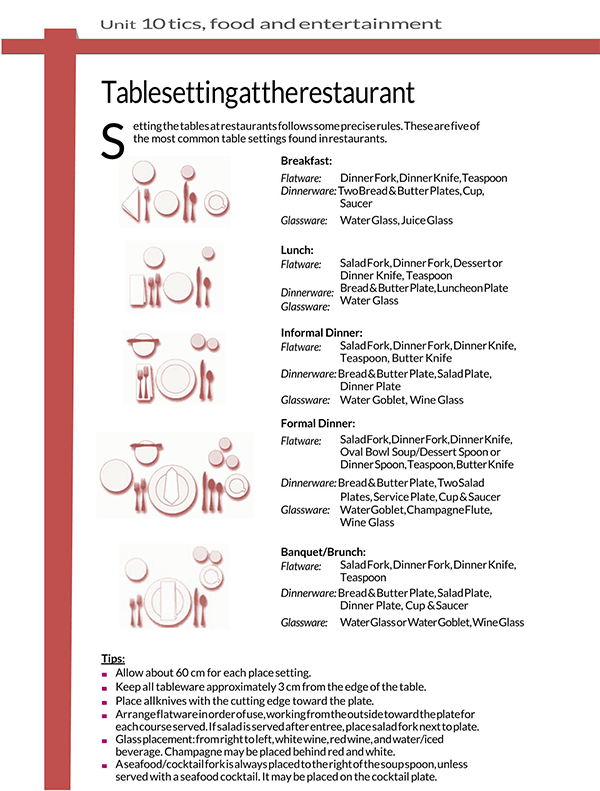
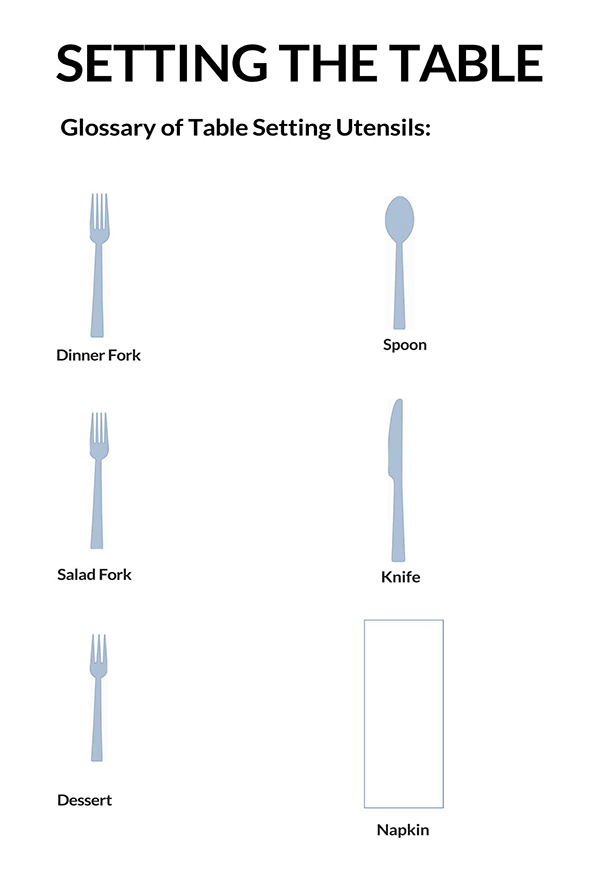
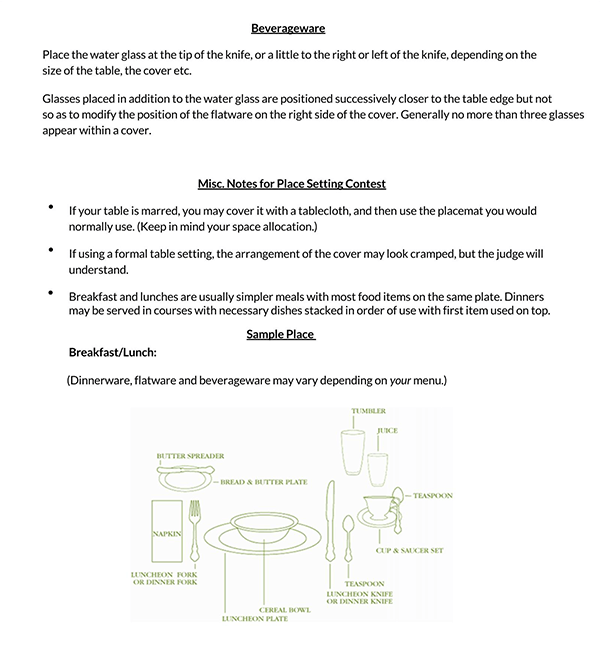
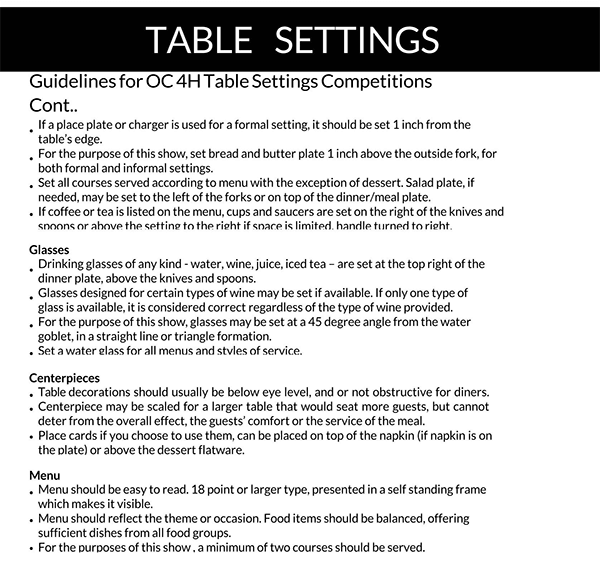
Types of Tabling Templates
These are different types; basic, formal, and casual. Each place setting is determined by the type of event and the level of formality of the event. For instance, a basic setting will have fewer utensils, a casual one will have more utensils than basic ones, and a formal setting will have more elegant, high-quality utensils compared to basic and casual settings.
Here is a comprehensive breakdown of how each table should be set:
Casual table setting
The casual setting is usually used in luncheons and banquets. It is one of the most common choices for contemporary casual settings and wedding table settings. The casual table setting is usually designed for three courses, and flatware provided is usually meant for salad or soup, main course, and dessert.
Below is a step-by-step guide on how to set create a casual setting:
- Step 1: Place a serving plate in the middle of the table setting
- Step 2: Place a bread plate to the top left of the serving plate and place a butter knife with the blade facing down and the handle facing towards the right on top of the bread plate
- Step 3: Next, place silverware on the left side of the serving plate. Place the dinner fork on the inside and the salad fork on the outside
- Step 4: On the right side of the serving plate, some of the silverware to include are; dinner knife, teaspoon and soup spoon
- Step 5: Place a glass of water above the dinner knife
- Step 6: Next to the glass of water, place the wine glass
Basic table setting
The basic setting is a simple form of tabling. It is ideal for all types of casual events and restaurants. A basic setting usually has six pieces and is the foundation of all types of the placing styles. Regardless of the event, having a table setting can help guests feel welcomed and ensure that they have everything they need for their feast.
Here is a step-by-step guide on how to create the basic setting:
- Step 1: Place a serving plate in the middle of the setting
- Step 2: Place a napkin to the top left side of the plate
- Step 3: Place a fork on top of the napkin
- Step 4: Place a knife to the right side of the plate
- Step 5: Place a water or coffee glass above the knife slightly to the right
Buffet place setting
To prepare a buffet setting, start with the plates, followed by the main dishes, vegetables, bread, relishes, and salads. All the utensils should be placed at the end of the buffet and table decorations placed above and in the center of the buffet arrangements. To avoid congestion on one table, consider placing the drinks, glasses, dessert, and cups on a separate table.
Formal table setting
The formal setting is common in weddings and official places such as state dinners and dining restaurants. Formal setting, compared to the other types of place settings, is very complex. Formal setting templates are usually designed for a six-course meal, including the appetizer, salad, soup, starch, protein, and dessert. Formal setting incorporates the use of more flatware and glassware compared to other table settings.
Below is a step-by-step guide on how to create a formal dinner table setting:
- Step 1: Place an ironed tablecloth on the table
- Step 2: Place a serving plate in the center of the place
- Step 3: Next, place a bread plate to the top left of the serving plate and place the butter knife on top of the bread plate with the handle facing towards the right and the blade facing down
- Step 4: Place silverware on the left side of the serving plate, beginning with the dinner fork on the inside and the salad fork on the outside
- Step 5: On the right side of the serving plate, place silverware from the inside out. The silverware to include are: a dinner knife, salad knife, soup spoon, and teaspoon
- Step 6: Ensure that all flatware is evenly spaced and the bottom is lined up with the bottom of the serving plate
- Step 7: Place the dessert spoon directly above the serving plate. It should be horizontally aligned with the handle towards the right
- Step 8: Just above the dinner knife, place a water glass
- Step 9: Above the water glass, slightly to the right, place the white wine glass
- Step 10: Next, place the red wine glass slightly to the right, just above the white wine glass
- Step 11: Lastly, place a cup and saucer above the soup spoon and slightly to the right
note
There are several variations that a multi-course meal could have when it comes to a place setting. For instance, there could be a soup and palette cleansing mint sorbet course, meaning two spoons will be used or will have to be added during the course of the meal, or there could be soup served between the main course and a salad, which means the spoons will have to be placed between the two knives.
Informal/semi-formal table setting
Informal table setting, also referred to as semi-formal setting, incorporates the use of fewer utensils and serving dishes. The informal setting is common in most high street restaurants and private settings.
For the informal tabling, the desert utensils can either be set above during the entire meal or brought out with the dessert. If the utensils are being set for the entire meal, the fork should be placed with the handle pointing toward the left and the spoon placed above the fork with its handle facing the right side.
The butter knife should be placed pointing to the right side to make it easier for right-handed diners to pick it up using their right hand and use it.
Additionally, the butter knives should be placed on the butter plate with the blade facing toward the diner and the forks on top of the napkin. Although some people prefer not to place the forks on top of the napkins, you may consider placing them next to the napkins.
Lastly, if the wine is to be served at the table, the wine glasses should be placed to the right of the water glass.
Super formal place setting
Super formal setting, also commonly referred to as the royal family tabling, is the most elaborate and complex of all the places. Super formal template incorporates the use of all the utensils needed for all the courses rounding out to a total of seventeen pieces. It incorporates a full course meal including the appetizer, salad, soup, starch, protein, dessert, dinner, and multiple beverage options.
Quick Seating Arrangements Tips
It is important to determine who will sit where and how many people will sit at each table when setting up the tables.
Ensure that you consider the following:
Use place cards
Place cards are important as they help guide each guest on where they should sit and ensure some level of order at the reception and during the event. However, it is recommended to only use place cards if you are hosting more than six guests to not appear to be overly controlling. Each place card should have the full names of the guest and the seat/table number.
Seating arrangements
Order at any event is usually determined by the seating arrangements. Depending on the type of event or occasion and the number of guests attending, you should consider organizing the tables based on your guests’ personalities and common interests.
EXAMPLE
If it is a wedding party, you should consider having the couples seated on the same table, singles on a separate table to help them interact, and children on a separate table from adults.
Seating guests of honor
Guests of honors usually want to feel special and welcomed in any event, and it is your duty to ensure that they do. There is a rule of thumb when it comes to the seating arrangements of the guests of honor- A male guest of honor should sit to the left-hand side of the host, and a female guest of honor should sit at the right side of the host.
Large dinner parties
When hosting a large dinner party or a large event, it is important to ensure that there is order and that everything is neatly organized. To do this, consider using a seating list or guide at the reception or at the entrance. This will ensure that each guest is seated at the right spot or table, thereby avoiding confusion.
Examples (PDF)
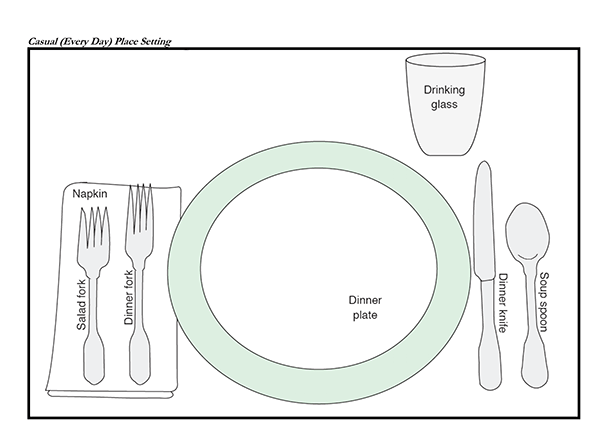
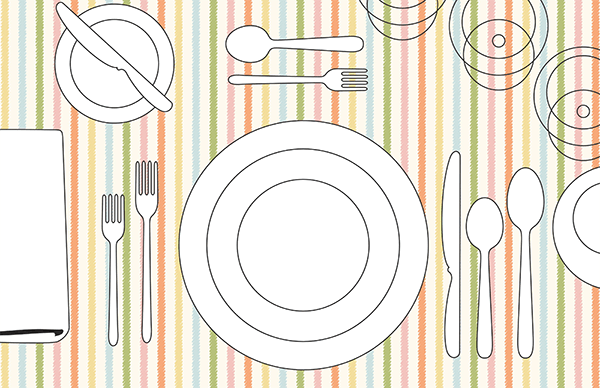
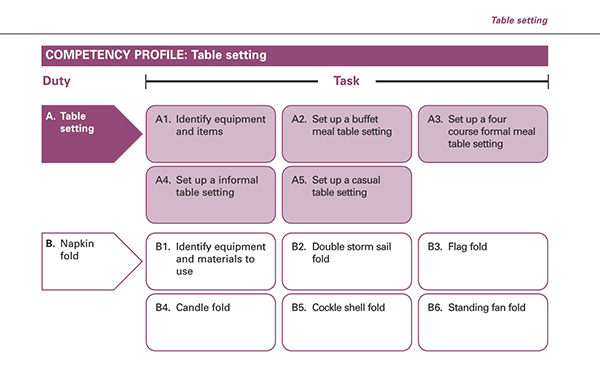
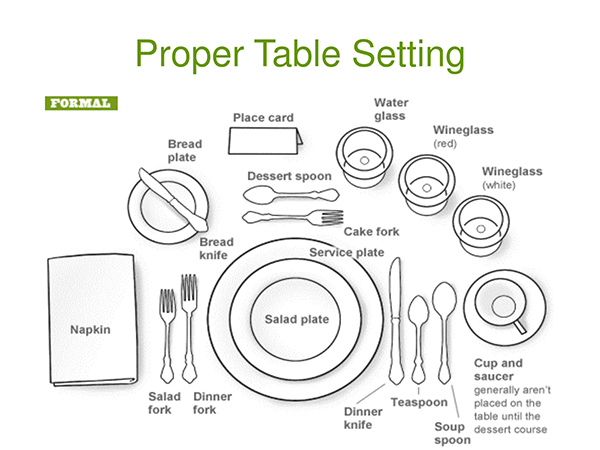
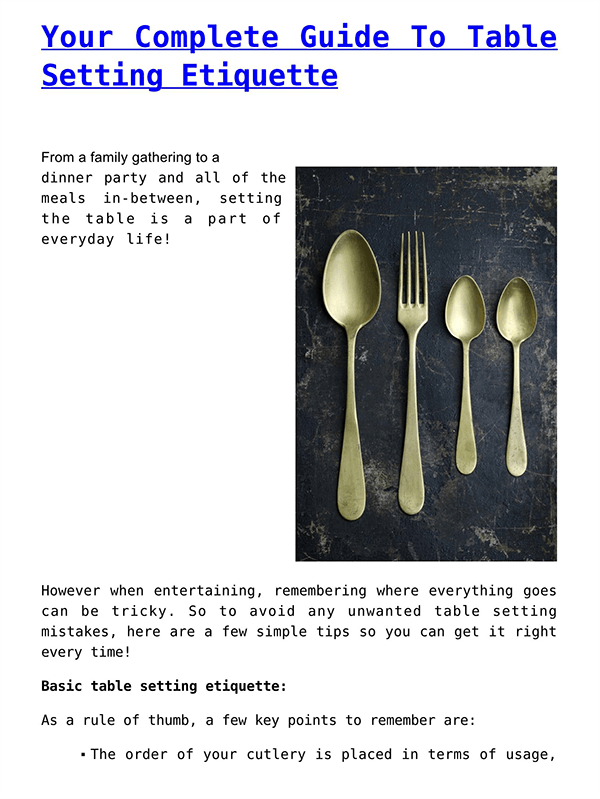
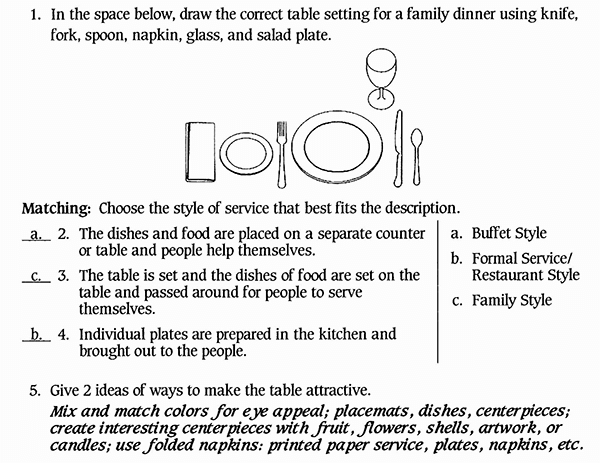
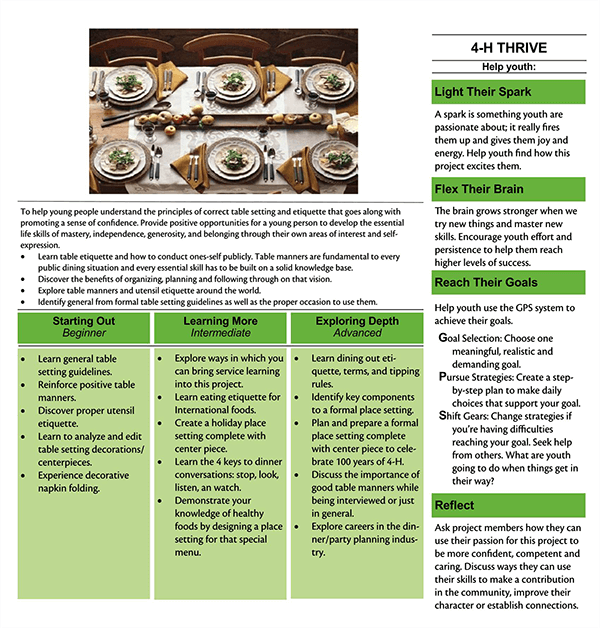
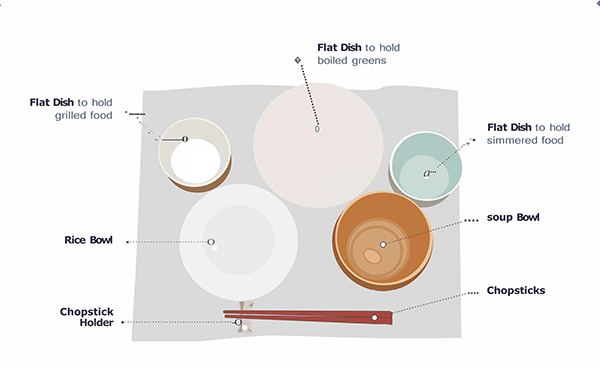
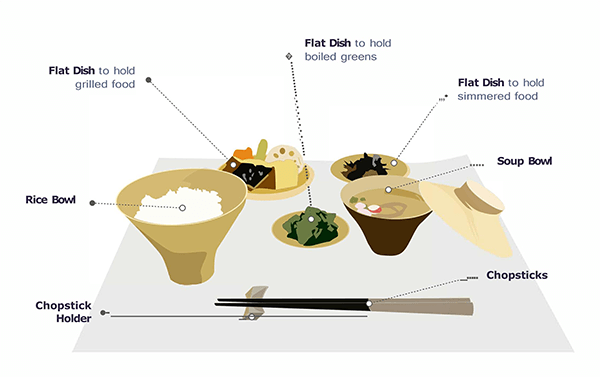
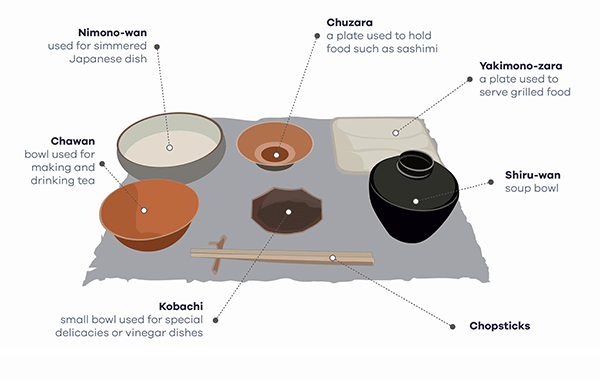
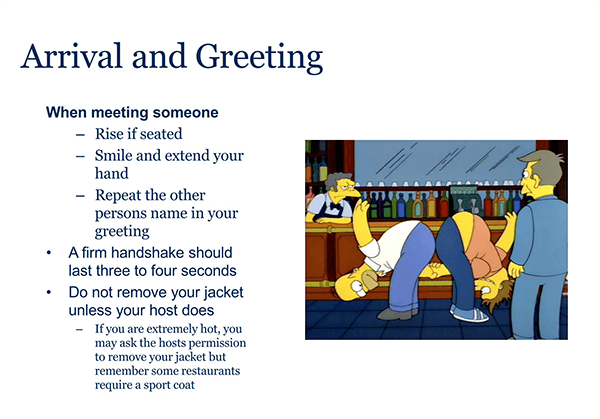
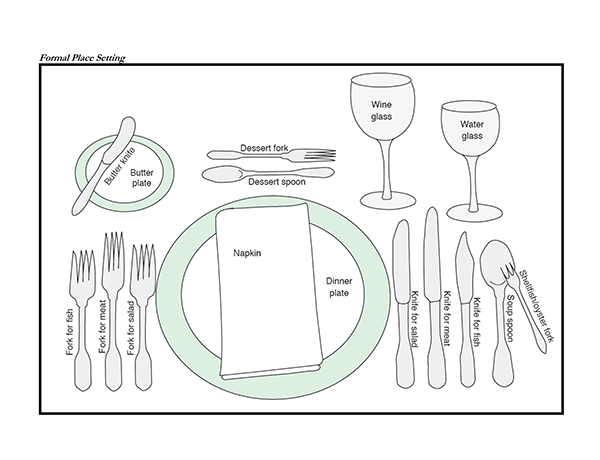
Conclusion
The place setting template is very useful for any event, occasion, or gathering. It helps ensure some level of organization and helps avoid confusion during the event, occasion or gathering. Templates can be used for any type of event or occasion. By understanding the different types of settings and utilizing the different templates, you will be a step closer to ensuring your event is a success and that all your guests feel welcomed and happy during the event.




